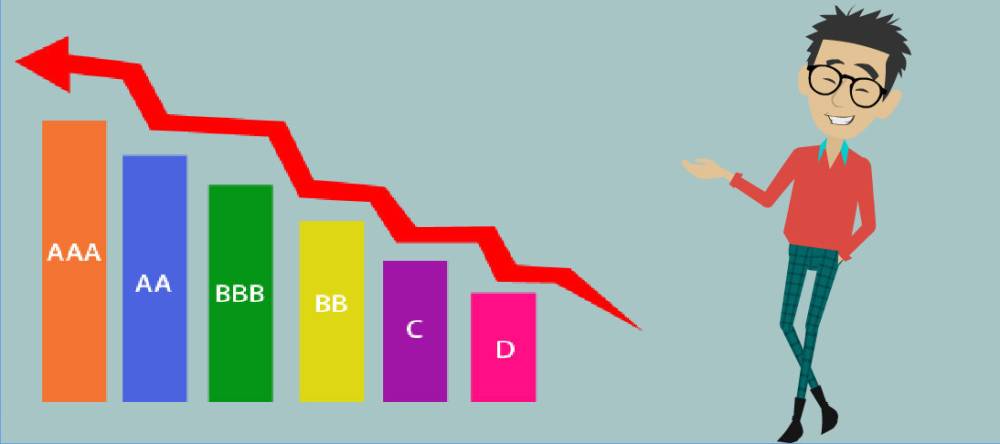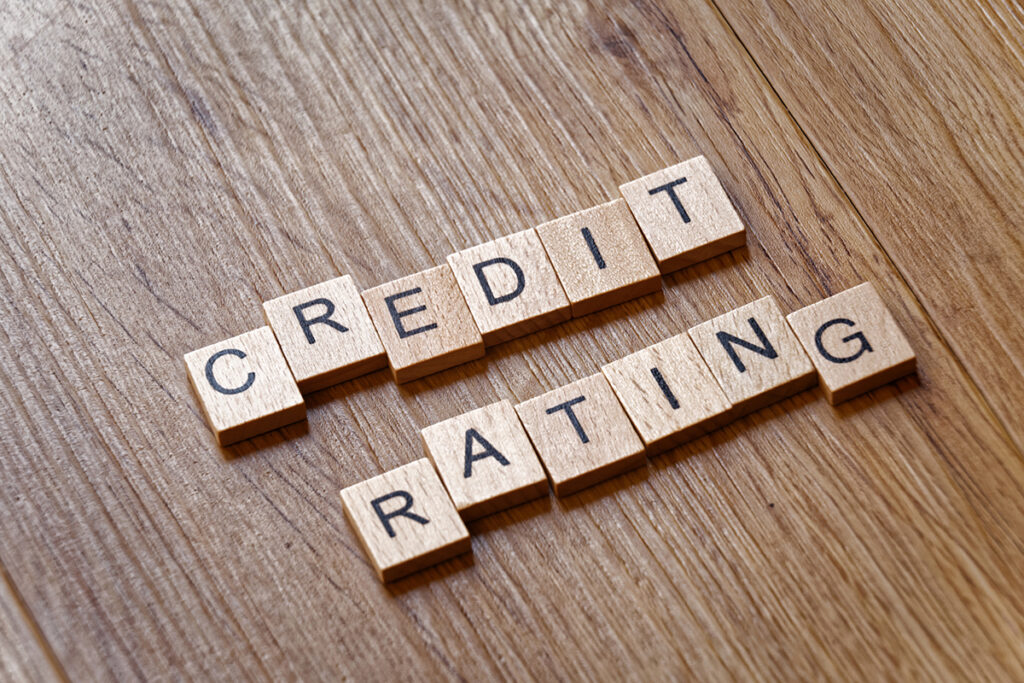Credit ratings indicate credit qualities or abilities to pay debts of different states, banks, insurance companies, private pension funds, and other financial institutions. They are determined by evaluation of the companies´ financial positions, assets and liabilities, and credit histories. In other words, credit ratings are the entity or sovereign (state) creditworthiness and solvency.
It is an index of the risk at investing in debts (buying debts for example as government bonds). Ratings are determined by so-called credit rating agencies. Among them stand out global private rating agencies such the Standard & Poor’s, the investors’ service Moody’s, and the American corporation Fitch among others.
A credit rating is an essential indicator for investors as it allows them to evaluate the offered interest concerning risks they assume and to include additional guarantees in the loan contracts. There are separate ratings for bonds. They reflect the ability of the company to pay dividends and repay bonds on time.

Bonds of different types, even within the same company, may have different ratings depending on different risk degrees. For example, subordinated bonds usually have a lower rating. This means that the risk to the buyer is higher.
ContentsHow is a credit rating evaluated?
Credit rating agencies, at least the three most important mentioned above, calculate short and long-term risks on corporate debt, bonds, and other financial instruments. A qualification is represented by an alphanumeric code. Each agency has its code. There is no unified code-shared standard for all rating agencies.
Debt instruments that started maturity in a year or more are qualified by long-term debt ratings. The scale from the highest AAA to the lowest — D also has sub-values (+) or (-). These signs indicate whether the rating is close to the next higher or lower category, respectively.
The rating agency S&P and the corporation Fitch use rating, code AAA, to rate corporate debts with less risk and the D for those with the highest risk. The investors´ service Moody’s gives AAA as the best rating and a D as the worst. A rating lower than or equal to Baa (Moody’s) or BBB (Fitch and S&P) would not be considered as an investment transaction but as high-risk speculation.
A BBB rating indicates that the issuer or issuance’s ability to meet its financial obligations is adequate. However, issuers or issues having this rating are more vulnerable to adverse events compared to those rated in higher categories. Also, individuals can have credit estimation, which is known as a credit score and not a credit rating.
Why do you need a credit rating?
Speaking about insurance companies and private pension funds, one should be even more careful when choosing financial partners if you want to invest money for a long time to save them for your child’s education or own pension through life insurance or a contract with a non-state pension fund.
Since savings will be entrusted for a long time, and the deposit insurance system does not cover these contributions, the requirements for reliability should be high. It is better to choose credit ratings of insurance companies and non-state pension funds not lower than “BBB”. You should choose among the most reliable entities those that show the maximum profitability after several years.

Credit ratings of microfinance organizations
Investing in MFOs is becoming increasingly popular as they offer significantly higher returns than banks. But such investments are not included in the state deposit insurance system. Therefore, the MFOs reliability should be carefully evaluated.
MFOs receive credit ratings less often than banks. If a microfinance organization does this, it already speaks in its favor. In case you want to entrust savings to an MFI for a short period, up to three months, you can risk and choose an MFO with BB or B letters.
In case you intend to sign a contract for a longer period, it is worth staying with companies that have a credit rating of at least BBB-. It is important to visit agencies’ websites and from time to time double-check this data.
Risk and return on bonds
Bonds are the most predictable securities. Their fixed-income unlike stocks and other financial instruments is known in advance. The risk is also known. Return and risk are closely related indicators. The greater is the declared profit, the higher is the chance to fail to get it. It is waste of time to look for bonds with high ratings there on sites of rating agencies. All the most reliable stock exchanges are listed on a special First (quotation) list or First listing level.
There are different bond types. Their profitability is different depending on the risk and rating, Interest rate risks, credit or default risks are the most essential indicators. A default risk means that the bond issuer fails to pay the principal or interest. So it is important to clear out bond ratings before start investing in them by determining creditworthiness the issuer’s creditworthiness and reliability. That is, how likely it dividends will be paid to the investor.
You can buy a bond with a high credit rating AAA and a moderate yield. Or you can take the risk of investing in high-yielding B-rated securities. Here everything depends on the situation in a financial market. A company will fulfill its obligations on time and in full if no global force major arises. Otherwise, a company may refuse to pay. That is why it is not recommended novice investors consider lower-rated securities.
Can shares get credit ratings?
Shares are not debt securities, but equity stakes. They do not expire and have no agreed interest. Dividends distribution depends on the profit (variable income) of the business. The company may suspend dividend payments due to poor performance during the year. This fact will not mean a violation of the terms of the contract. Therefore, when we talk about credit risk and credit rating, we mean fixed income securities, but not stocks.
Stocks, unlike bonds, do not have credit ratings. A company can pay out good dividends and have a high credit rating. But this does not mean that its business will be constantly stable, and its shares will irreversibly grow in value. So it is necessary to analyze companies´ ratings that issued shares to choose them. It is not so much important a rating of the issuing company as is important the level of listing of its securities on stock exchanges.









